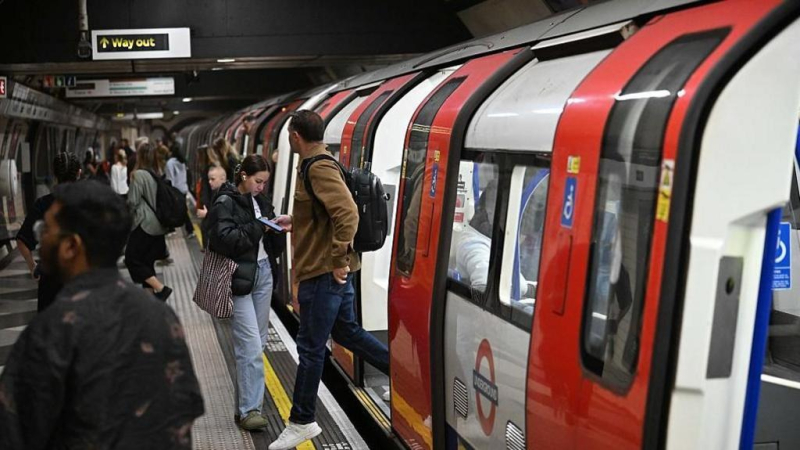News & Updates
London Underground Strike Affects Over 2 Million Passengers

A major strike across the London Underground has thrown the city’s transport network into turmoil, affecting more than two million passengers in a single week. Members of the Rail, Maritime and Transport Workers Union began their industrial action after talks with Transport for London failed to resolve disputes over pay, working hours, and fatigue management. For the capital’s residents, commuters, and businesses, the walkout has caused widespread disruption and exposed the city’s continued reliance on its historic transit infrastructure.
The strike comes at a sensitive time for London’s economy. As the city works to sustain its post-pandemic recovery, reliable transport remains crucial for office attendance, retail activity, and tourism. The closure of key Underground lines and restricted service on others has left millions scrambling for alternative travel options. Many are turning to buses, cycling, and remote work arrangements as they navigate a week marked by delays, congestion, and frustration.
Commuters Face Widespread Disruption
For ordinary Londoners, the strike has translated into longer commutes and chaotic travel conditions. During peak hours, several Tube lines have operated with only partial service, while others have been shut down completely. Passengers have queued outside bus stations and overground platforms for hours as they attempt to reach work or school. Some employers have encouraged flexible start times or temporary work-from-home arrangements to ease the strain on their employees.
Demand for alternative transport has soared. London’s cycle-hire schemes reported record usage as thousands of residents opted for bikes to avoid packed buses and congested roads. Ride-share bookings also surged, with reports of higher fares during peak travel times. Meanwhile, traffic congestion in central and outer London worsened as commuters shifted from public transport to private vehicles. The city’s streets, already crowded, have become even more congested as a result of the ongoing disruption.
The impact of the strike has been particularly severe for key workers and shift employees who cannot work remotely. Healthcare staff, hospitality employees, and retail workers have faced significant difficulties reaching their workplaces on time. For many, the increased cost of alternative travel options adds to the financial strain of living in an already expensive city.
Economic and Social Impact Across the Capital
The economic fallout from the strike extends far beyond the transport sector. Retailers in central London have reported a noticeable decline in foot traffic, with fewer shoppers and tourists visiting high-street areas. Hospitality venues including restaurants, cafés, and entertainment venues have seen cancellations and reduced bookings during the strike days. Industry analysts estimate that each day of industrial action could cost the London economy millions of pounds in lost productivity and spending.
Event organisers have also been hit hard. Several concerts, theatre performances, and public gatherings were postponed due to expected travel chaos. Hotels have faced booking cancellations from visitors unable to navigate the disrupted transport system. The knock-on effects are likely to ripple through the service sector for weeks, particularly in areas dependent on tourism and footfall from major transport hubs.
For small businesses, the strike has amplified operational challenges that have lingered since the pandemic. Reduced customer flow, supply delays, and staffing issues have highlighted how dependent London’s business ecosystem remains on a functioning Underground network. Many shop owners have voiced concerns that repeated transport disruptions could discourage future tourism and investment in the city centre.
Labour Disputes and the Road to Resolution
At the core of the dispute are long-standing issues surrounding pay progression, staff scheduling, and fatigue. Union representatives have argued that workers have faced years of real-term pay erosion amid rising inflation and higher living costs. They also claim that excessive working hours and staff shortages have contributed to safety risks and burnout.
Transport for London maintains that it has offered fair pay rises but must also operate within tight financial limits following years of budget strain. Officials argue that wage increases must be balanced with investments in maintenance, station upgrades, and service reliability. With negotiations ongoing, neither side has yet reached a compromise that could prevent further industrial action later in the year.
Political leaders have urged both parties to return to the negotiating table to avoid prolonged disruption. City officials have also been under pressure to develop long-term contingency plans, including greater investment in digital ticketing, automation, and improved communication systems to help passengers adapt during strikes. However, public frustration remains high, with many commuters questioning why disputes of this scale continue to paralyse such a vital network.
Conclusion
The London Underground strike has revealed both the resilience and fragility of one of the world’s most iconic transport systems. For millions of Londoners, the disruption has been a reminder of how central the Tube is to daily life, commerce, and the city’s global identity. The path forward will require compromise between workers, management, and policymakers, as well as renewed investment in modernising the network. Only through collaboration and long-term planning can London ensure that future strikes do not bring the city to a standstill again.








